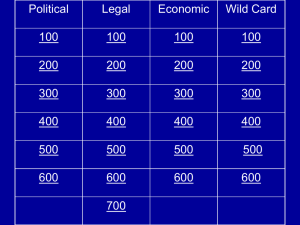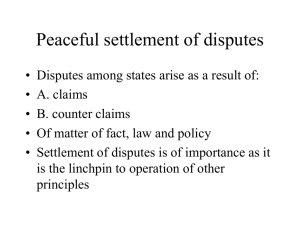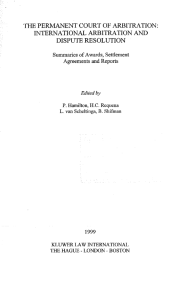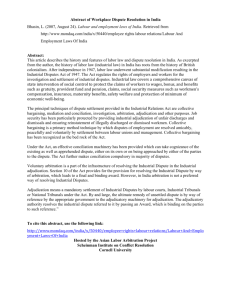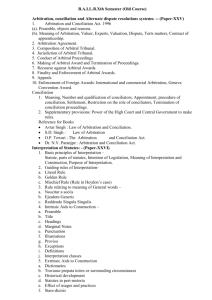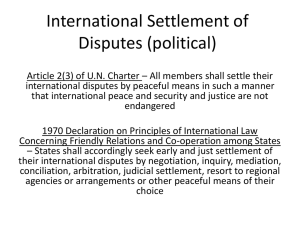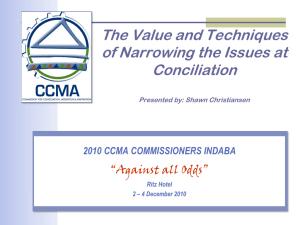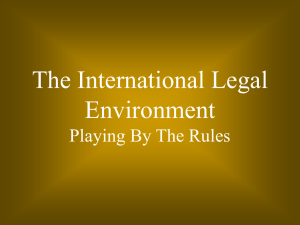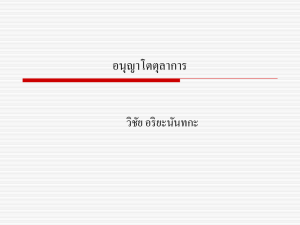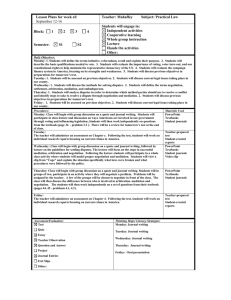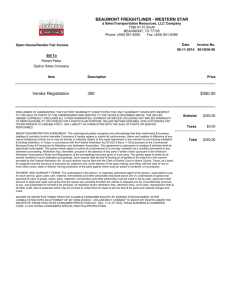ALTERNATE DISPUTE RESOLUTION (“ADR”) Legal Basis of ADR
advertisement
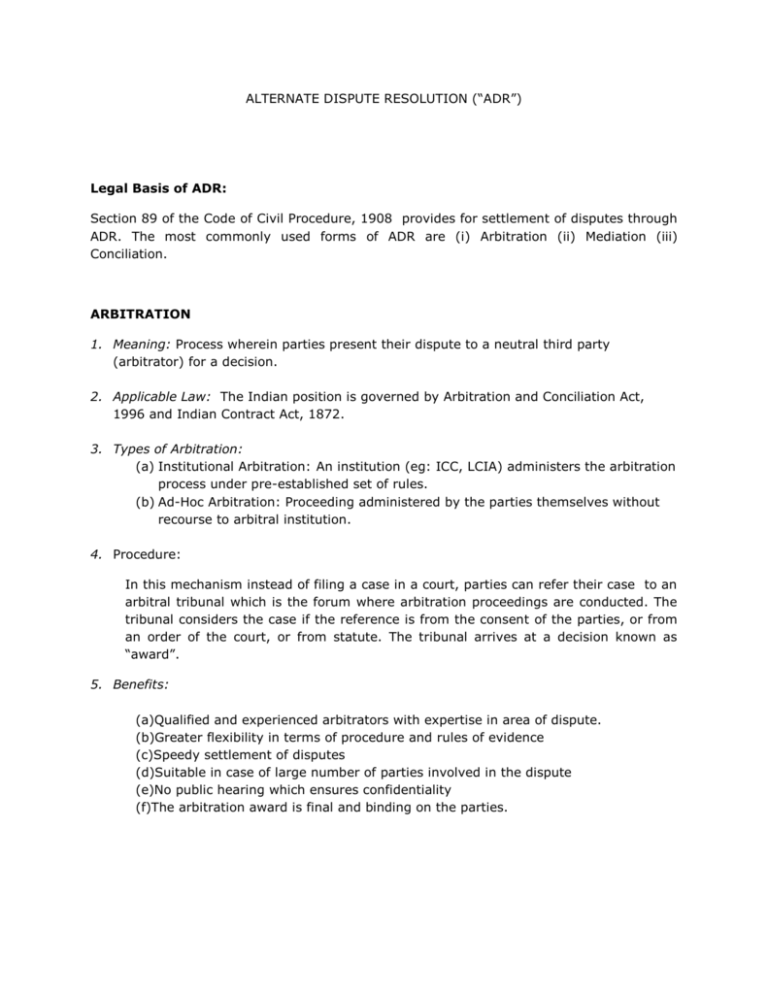
ALTERNATE DISPUTE RESOLUTION (“ADR”) Legal Basis of ADR: Section 89 of the Code of Civil Procedure, 1908 provides for settlement of disputes through ADR. The most commonly used forms of ADR are (i) Arbitration (ii) Mediation (iii) Conciliation. ARBITRATION 1. Meaning: Process wherein parties present their dispute to a neutral third party (arbitrator) for a decision. 2. Applicable Law: The Indian position is governed by Arbitration and Conciliation Act, 1996 and Indian Contract Act, 1872. 3. Types of Arbitration: (a) Institutional Arbitration: An institution (eg: ICC, LCIA) administers the arbitration process under pre-established set of rules. (b) Ad-Hoc Arbitration: Proceeding administered by the parties themselves without recourse to arbitral institution. 4. Procedure: In this mechanism instead of filing a case in a court, parties can refer their case to an arbitral tribunal which is the forum where arbitration proceedings are conducted. The tribunal considers the case if the reference is from the consent of the parties, or from an order of the court, or from statute. The tribunal arrives at a decision known as “award”. 5. Benefits: (a)Qualified and experienced arbitrators with expertise in area of dispute. (b)Greater flexibility in terms of procedure and rules of evidence (c)Speedy settlement of disputes (d)Suitable in case of large number of parties involved in the dispute (e)No public hearing which ensures confidentiality (f)The arbitration award is final and binding on the parties. MEDIATION 1. Meaning: Mediation is a voluntary process in which a neutral third party negotiates and facilitates with emphasis on building relationships of the stakeholders. 2. Applicable Law: No particular statute governing mediation in India, the courts have recommended that the adoption of the model Civil Procedure Mediation Rules framed by the Law Commission. 3. Procedure: The procedure can be classified under the following heads (i) Mediator begins with his opening statement, introducing everyone and explaining the aim and rules of the mediation. (ii) Parties describe the dispute and how they are affected by it. (iii) Joint Discussion (iv) Private Caucuses (v) Negotiation (vi) Closure 4. Benefits: (a) Parties negotiate themselves ensuring greater degree of control (b)Mediated settlement cover both legal and phychological issues, hence more customized for the needs of parties (c)No long drawn procedural formalities ensure rapid settlement of disputes as compared to litigation or arbitration. (d)The economical burden on the parties is lesser. CONCILIATION 1. Meaning: Voluntary process wherein a neutral person helps the parties reach a negotiated settlement. 2. Applicable Law: Part III , Arbitration and Conciliation Act, 1996. 3. Procedure under the Act: The act provides for commencement of conciliation proceedings upon the invitation of one of the parties, the statements are submitted to the conciliator who assists the parties and makes suggestions in an impartial manner to reach an amicable settlement. The conciliation proceeding comes to an end by signing of the Settlement Agreement by the parties. 4. Conciliation under other statutes: The following statutes contain provisions for settlement of disputes by conciliation (i) Industrial Disputes Act 1947, Hindu Marriage Act, 1948, Family Courts Act 1948. 5. Benefits (a) Flexible and informal process as compared to other methods of dispute settlement. (b)No imposition of verdict on the parties, the role of the conciliator is supporting in generating options between parties. (c)The benefits are similar to that of mediation as conciliation is a more active form of mediation.
